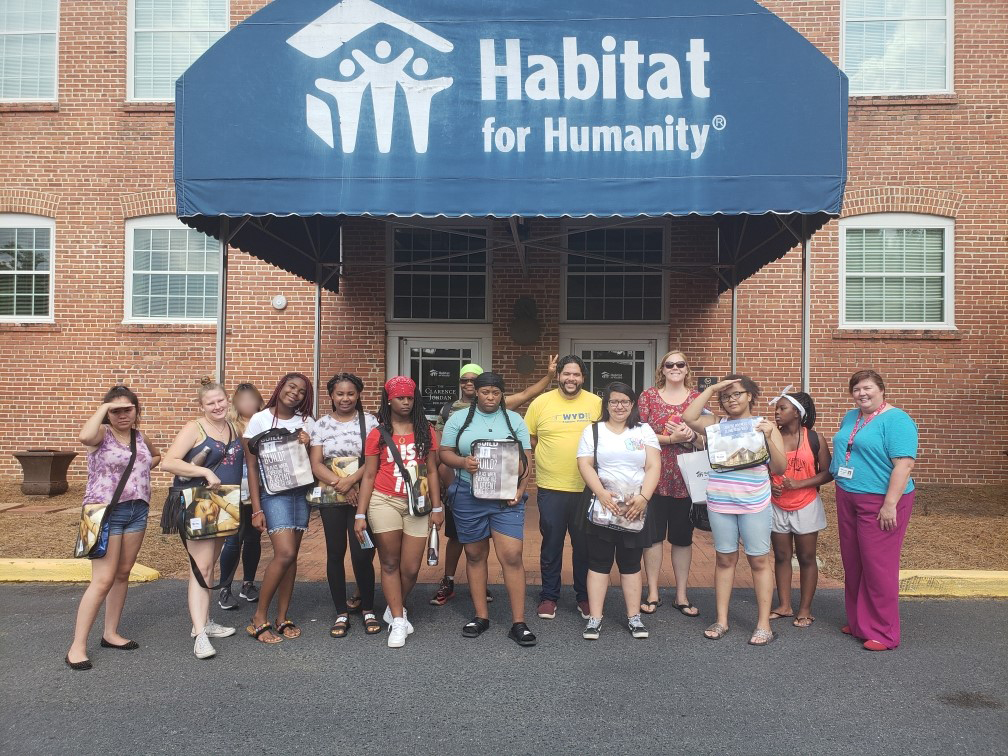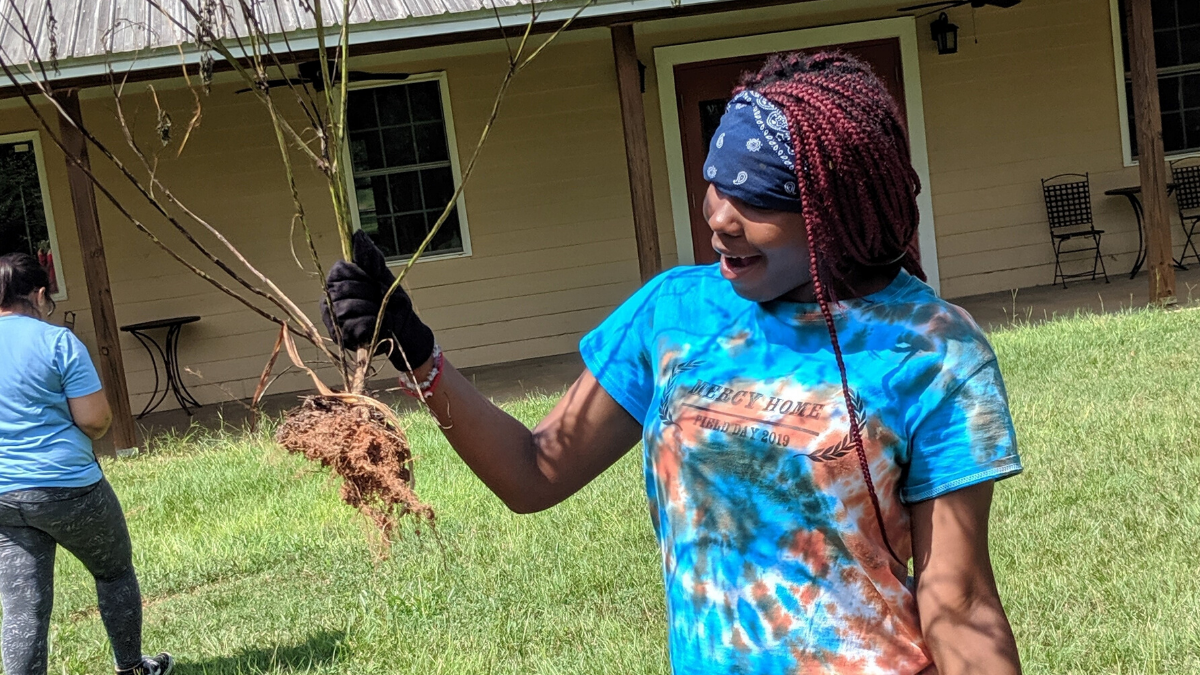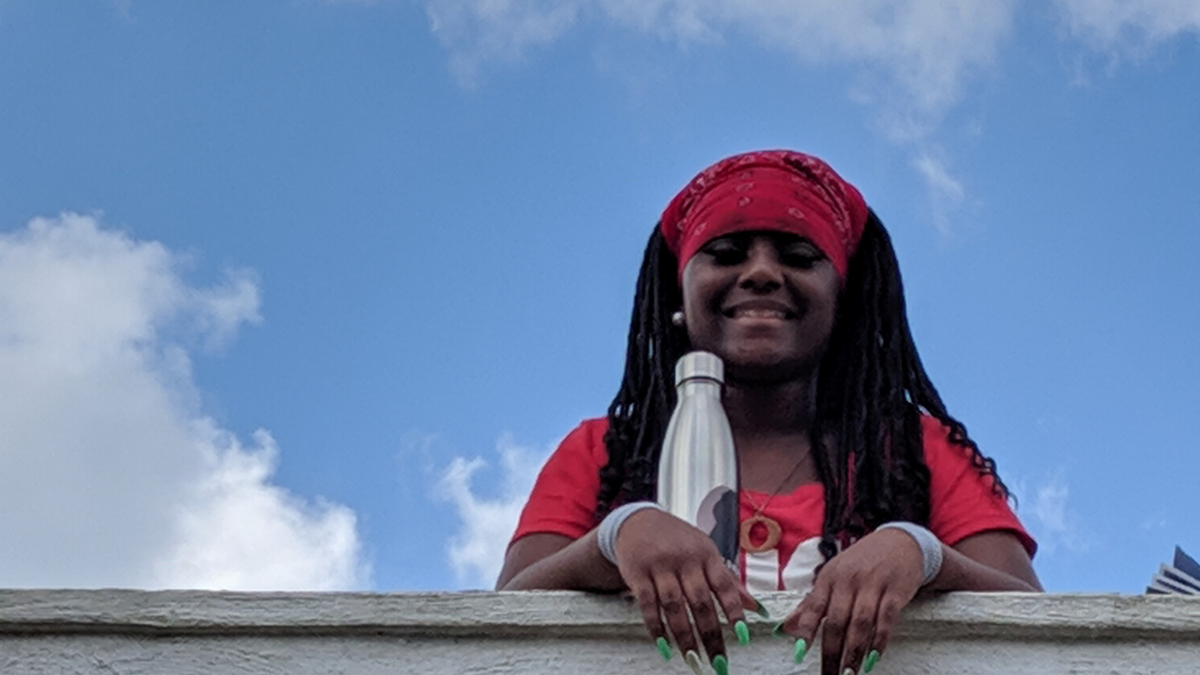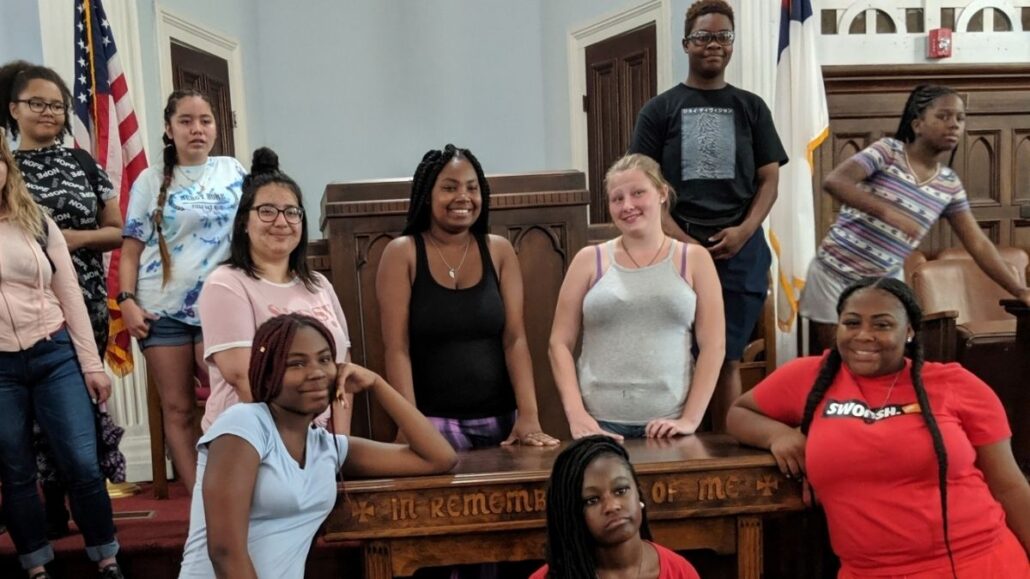Mercy Home Gives Miguel the Chance to Begin Again
After years of homelessness, one young man’s inspiring story begins at Mercy Home Slowly, Miguel stepped towards the glistening shores...
February 6, 2023
Over the summer, 12 of our young people took an unforgettable trip called the Justice Journey. Along with several of our coworkers, they traveled to Georgia and Alabama, where they visited key locations of the civil rights movement.
Our kids stayed at Koinonia Farm for the duration of their trip. Koinonia played an important role in both civil rights and also the birth of Habitat for Humanity International. While staying there, the kids and coworkers were part of the intentional Christian community there and worked alongside the people who lived there. They began each day with time in the chapel and shared meals with them.
“When we went to Koinonia, it was a chance for us to spend time together building a community and experience what community looks like [there],” Nikki Coffey, the supervisor of youth care in Seton Home and one of the coworkers who led the trip, said. “[It] has a lot of similarities to our time here at Mercy Home. They have meals together, they work together, they do chores, they kind of live life together.”
Each of the kids who went on the trip had to fill out an application that involved putting together a project or essay about a civil rights-related topic. Once they were accepted, our coworkers held several team building meetings and everyone watched the movie “Selma” and a documentary about Koinonia Farm so that everyone was prepared for the time ahead of them.
During the weeklong trip, our kids visited numerous important sites in civil rights history, including the Andersonville National Historic site and POW museum, which is dedicated to all prisoners of war in America’s past; the Dexter Avenue Baptist Church and Parish where Dr. Martin Luther King Jr. preached his first message of hope and brotherhood and was also a center point of the Montgomery bus boycott; the Southern Poverty Law Center Civil Rights Memorial, which has exhibits about martyrs of the civil rights movement and a Wall of Tolerance; the National Voting Rights Museum and Institute, which included documents and artifacts related to the history of Selma, Ala., the voting rights struggle, voting rights in America, and the civil rights movement, as well as visits to the historic Brown Chapel A.M.E. Church, and a walk across the historic Edmund Pettus Bridge; Lowndes Interpretive Center, a site dedicated to those who peacefully marched from Selma to Montgomery to gain the right to vote; Martin Luther King Jr.’s National Historic Site, which includes of several buildings in Atlanta central to his life, including his boyhood home and the original Ebenezer Baptist Church, where King was baptized and both he and his father were pastors; and Habitat for Humanity International, a global nonprofit housing organization working in local communities throughout the United States and in 70 countries.
The ability to witness places where significant events in the civil rights movement took place was an important part of the trip, Marc Velasquez, another coworker who led the trip, explained.
“There’s something about being witness to history that allows you to feel it more and to feel the impact of it more and I think we wanted to get that our of the experience as well,” he said.
This trip has been in the making for around six years. Nikki had taken the same trip with several groups of college students at a previous job and was eager to return with members of the Mercy Home family.
“Koinonia is hallowed ground,” she said. “[It’s] a place where the grassroots of fighting against discrimination began. I feel like a lot happened here and there’s something special to me about just being on those grounds.”
There’s something about being witness to history that allows you to feel it more and to feel the impact of it more and I think we wanted to get that our of the experience as well.
An important part of the time at Koinonia was the time spent in chapel each morning at 7:45 a.m. Each day begins there with a time to sit in silence, followed by the reading of a Bible verse, a devotional, and some singing. Nikki said that while the first day of participating in this, particularly the experience of sitting in silence, was awkward for many of the girls, they soon settled into the routine of it.
“By the end of the week, we had that silence and it was a much more comfortable silence,” she said. “The girls … learned to sit in that silence better in that week, to sit with themselves and their thoughts.
“I think that practice of setting 15 minutes aside to just kind of be silent is a really great practice in mindfulness that we love our kids to do and they got to practice that and really enjoy it when we were at Koinonia.”
Both the young people and coworkers were greatly impacted by visiting so many historic civil rights locations as well.


“It’s one thing learning about Martin Luther King, but then seeing it, like he used to live here, this is his hometown, [was impactful],” one of the young women who took the trip, said.
“I liked visiting civil rights places just to learn more history,” added another attendee, Ladonna.
Sharing the experience of visiting all these sites was a special thing for Marc.
“I’ve tried to be open [to the trip’s many experiences], to experience these trips knowing that’s what our youth are doing as well,” he said. “With that in mind, I think the history in Montgomery was incredibly eye-opening and really impactful for me … these were just really amazing experiences and being able to experience that with our youth was just really impactful for me. … You hear the stories but to actually physically be there to see it and to reimagine it, it just has a greater impact.”
The opportunity to participate in community service while helping around the farm and also doing some work at a home nearby was another impactful part of the trip for our young people.
“My favorite part was actually doing the community service because I had a lot of fun doing it,” said Maggie. “I just liked being there and experiencing it is really nice.”
“I liked working with the people,” added Ebony. “We were working on [growing] nuts and pecans and stuff, trying to grow plants. The best part was really living on the farm the whole time.”
To conclude each day, our coworkers and the kids reflected on what they had seen and experienced that day.
“I was very pleased with how reflective they were at the end of the day,” Marc said. “I was really happy with the depth of their reflections, the things they took from the day were sometimes beyond what we hoped for them to take from the day. They were really engaged with what we were doing, whether it be work or the history aspect of it. They were making the practical application to their own experience, which was great.”
My favorite part was actually doing the community service because I had a lot of fun doing it.

At the end of the day, Marc said that the best way to describe the trip was as a full one, even at times when it was not easy.
“I think it’s kind of hard to capture how much of a full experience it was, but I think full is a good word to describe it because there was a lot of laughter and good times together and a lot of reflection and a lot of learning and a lot of hard work and a lot of gnats and just the struggle that brought into it as well,” he said. “It was not an easy trip either, but I think that made it more impactful and worth it.”
Both Marc and Nikki hope that this is a trip that can be repeated for years to come. Nikki said that the girls who attended this year have been sharing their stories with the others and sparking a lot of interest in the trip.
“Other kids really want to go because they heard about it and that’s really cool,” she said.
Geniya perhaps summed up the experience in the best way.
“It’s definitely a once-in-a-lifetime experience,” she said.
After years of homelessness, one young man’s inspiring story begins at Mercy Home Slowly, Miguel stepped towards the glistening shores...
February 6, 2023
Behind the Scenes For the first 18 years of his life, Clemente Aragon stuck to the script. He went...
October 3, 2022
Nevaeh was tired of being let down by everyone in her life. Her dad didn’t even stick around long enough...
July 25, 2022
Comments